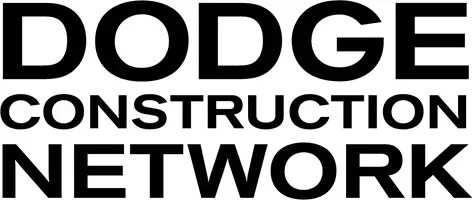Total construction starts witnessed a 4 percent increase in October, reaching a seasonally adjusted annual rate of $1.2 trillion, as per Dodge Construction Network. This indicates a complex landscape within the construction sector. Nonresidential building starts surged by 14 percent, nonbuilding starts rose 2 percent, while residential building starts declined 3 percent. On a year-to-date basis through October, total construction starts were up 3 percent compared to the same period in 2023. Residential starts showed a 7 percent growth, nonresidential buildings increased 1 percent year-to-date, and nonbuilding starts were up by less than one percent.
Unraveling the Dynamics of Construction Starts
Nonbuilding Insights
In October, nonbuilding construction saw a 2 percent increase, reaching a seasonally adjusted annual rate of $314 billion. Miscellaneous nonbuilding starts witnessed a remarkable 38 percent jump during the month. Highway and bridge starts also moved 7 percent higher. However, environmental public works starts fell 6 percent, and utility/gas plants lost 25 percent. Year to date through October, total nonbuilding starts remained flat compared to the previous year. Miscellaneous nonbuilding starts were up 19 percent, environmental public works starts were 9 percent higher, and highway and bridge starts improved by 5 percent. Utility/gas starts, on the other hand, were down 21 percent. For the 12 months ending October 2024, total nonbuilding starts were 1 percent lower than the previous 12 months. Miscellaneous nonbuilding starts were 19 percent higher, environmental public works gained 6 percent, and highway and bridge starts increased by 5 percent. But utility/gas starts saw a 22 percent year-over-year decline. The largest nonbuilding projects to break ground in October included a $1.6 billion natural gas pipeline and gathering system in and around Haynesville, Louisiana, the $1.3 billion Amtrak-Connecticut River bridge replacement in Old Saybrook, Connecticut, and the $1 billion Frederick Douglass Tunnel Southern Approach in Baltimore, Maryland.Nonresidential Highlights
Nonresidential building starts climbed 14 percent in October, reaching a seasonally adjusted annual rate of $466 million. Manufacturing starts rose 114 percent due to the start of several large projects. Institutional starts increased 13 percent due to higher activity levels in education and transportation. Commercial starts fell 3 percent despite gains in hotel and parking starts. On a year-to-date basis through October, total nonresidential starts were up 1 percent. Institutional starts were 16 percent higher, commercial starts were down 1 percent, and manufacturing starts were 33 percent lower year to date. For the 12 months ending October 2024, nonresidential building starts were down 1 percent compared to the previous 12 months. Manufacturing starts were down 37 percent, commercial starts were down 4 percent, and institutional starts were 17 percent higher. The largest nonresidential building projects to break ground in October were the $2.2 billion Henry Ford hospital tower in Detroit, Michigan, the $1.4 billion third phase of the LG Electric Battery plant expansion for Toyota vehicles in Holland, Michigan, and the $1.1 billion second phase of the Southwest Florida Airport expansion in Fort Meyers, Florida.Residential Trends
Residential building starts fell 3 percent in October, reaching a seasonally adjusted annual rate of $373 billion. Single-family starts lost 4 percent, while multifamily starts were down 2 percent. Through the first 10 months of the year, total residential starts were 7 percent higher. Single-family starts jumped 17 percent year to date, and multifamily starts were down 9 percent. For the 12 months ending October 2024, residential starts were 6 percent higher than the previous 12 months. Single-family starts were 17 percent higher, and multifamily starts were 11 percent lower on a 12-month rolling sum basis. The largest multifamily structures to break ground in October were the $384 million Frederick E. Samuel apartments in New York City, the $190 million Rivage Bal Harbour luxury condominiums in Bal Harbour, Florida, and the $190 million 1 K St. Southwest mixed-use building in Washington, D.C.
